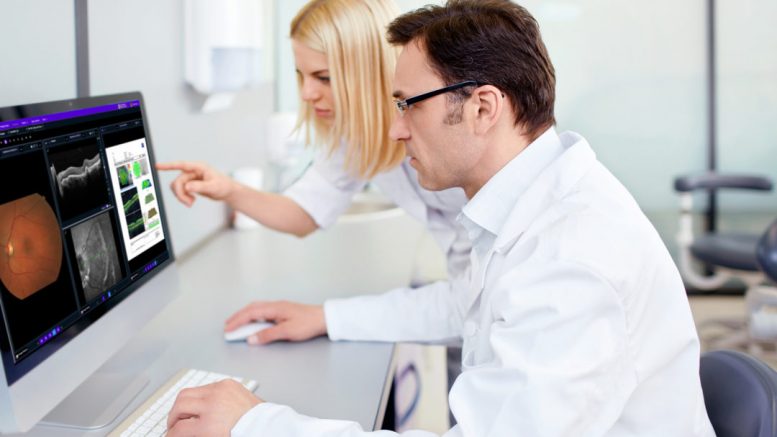New RetCAD software employs artificial intelligence to assist opticians, optometrists and eye care clinics in the detection of eye diseases like macular degeneration and diabetic retinopathy.
The RetCAD technology, that has been developed by Dutch clinical SI-specialist Thirona, analyses retina scans for abnormalities and alerts clinicians to the potential diseases helping to identify cases at an earlier stage.
RetCAD uses a fundus camera that scans the retina, the software rings the alarm when imperfections are registered. Such a scan can be performed by specialist eye clinics but will also be offered by regular opticians and optometrists. Macular degeneration or diabetic retinopathy are registered automatically by RetCAD and patients can be referred to specialist care without delay. In the absence of defects a follow up is not necessary until the next checkup within 1-2 years. The Harmony RS platform launches the RetCAD algorithm and presents a clear overview of the results; the analysis is consistent and reproducible. Thirona is developing an extension of RetCad to increase the number of eye conditions, e.g. glaucoma, that can be recognized.
Hans Liefting, Business Development Director of RetCAD, spoke about the about the software’s core functions during an announcement at the ESCRS Congress, in Paris: “medical care is offered in shops more often as an extra service for customers. Harmony enables opticians and optometrists to extend their services from eye measurements to eye analysis. The analysis obtained using our software is on par with the one performed by a certified ophthalmologist; a specialist should be consulted only in case a defect has been identified. RetCAD extends the selection of readily available eye care while relieving the workload for eye care specialists. Only those patients with an indicated ailment are referred to an ophthalmologist. The Harmony RS platform stores the patients’ earlier scan for reviewing. In short: more care and treatment for those who need it.”
Thirona is an innovator in artificial intelligence for medical image analysis. By creating intuitive and user-friendly products they shrink the gap between academic ideas and clinical usefulness. Founders Eva Rikxoort and Bram van Ginneken, both researchers at Radboud UMC, apply artificial intelligence in order to develop diagnostic software-solutions. The company also applies its AI-driven approach to thoracic CT-scans and thorax imaging.





